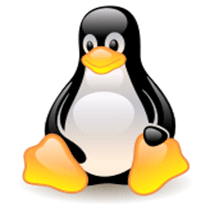Computing History Timeline
The Linux Kernel 2.2.0
Table of Contents
New Features Present in the Linux Kernel 2.2.0
The Kernel
The Kernel is the core of the operating system. Its primary functions are controlling execution of processes, handling memory management, providing a file system, and providing a portable interface through which programs may communicate with hardware.
The Linux Kernel

In 1991, in Helsinki, Linus Torvalds started a project that later became known as the Linux kernel. It was initially a terminal emulator, which Torvalds used to access the large UNIX servers of the university he was in. He wrote the program specifically for the hardware he was using and independent of an operating system because he wanted to use the functions of his new PC with an 80386 processor.
The Linux Kernel was initially conceived and assembled by Linus Torvalds in 1991. Early on, the Minix community contributed code and ideas to the Linux kernel. At the time, the GNU Project had created many of the components required for a free software operating system, but its own kernel, GNU Hurd, was incomplete and unavailable. The BSD operating system had not yet freed itself from legal encumbrances. This meant that despite the limited functionality of the early versions, Linux rapidly accumulated developers and users who adopted code from those projects for use with the new operating system. Today the Linux kernel has received contributions from thousands of programmers.
The Linux kernel has been in development since 1991.Linus Torvalds had wanted to call his invention Freax, a combination of "freak," "free," and "x," and an allusion to Unix. During the start of his work on the system, he stored the files under the name "Freax" for about a half year. Torvalds had already considered the name "Linux," but initially dismissed it as too egotistical. In order to facilitate development, the files were uploaded to the ftp server (ftp.funet.fi) of the Helsinki University of Technology (HUT) in September 1991. Ari Lemmke, Torvald's co worker at the HUT who was responsible for the servers at the time, did not feel Freax was a good name. Consequently, he dubbed the project "Linux" without consulting Torvalds. Later, however, Torvalds consented to "Linux": "After many arguments, he finally admitted that Linux was simply the better name. In the source code of version 0.01 of Linux, the name 'Freax' was still used in the makefile. Only later was the name Linux used. Thus the name actually not planned at all became generally accepted world-wide as linux kernel.

Torvalds announced in 1996 that there would be a mascot for Linux, a penguin. Larry Ewing provided the original draft of today's well known mascot based on this description. The name Tux was suggested by James Hughes as derivative of Torvalds's UniX.
The Linux kernel was first released to the public on 17 September 1991, for the Intel x86 PC architecture. The kernel was augmented with system utilities and libraries from the GNU project to create a usable operating system, which led to an alternative term, GNU/Linux. Linux is packaged for different uses in Linux distributions, which contain the sometimes modified kernel along with a variety of other software packages tailored to different requirements. Released under the GNU General Public License (GPL) and developed by contributors worldwide, Linux is one of the most well known examples of free software/open source.
Linux Kernel 2.2.0
The Linux Kernel 2.2.0 was released 25 January 1999. This latest version has a lot of new codes and drivers. It has many new hardware supports and is capable of many new functions. When it was first released in 1999, there were some serious bugs discover in the Linux Kernel 2.2.0.
New Features Present in the Linux Kernel 2.2.0
Linux 2.2.0 (1,800,847 lines of code):
Enhanced SMP (multi-processor) support
IBM MicroChannel (MCA) bus support
Kernel-level Plug-and-Play support
Support for more types of IDE chipsets
Support for PS/2 ESDI hard disks
RAID 0, 1, 4, and 5 support
Kernel-level IP configuration through BOOTP and RARP
IPV6 support (in addition to IPV4)
SPX networking
Acorn Econet/AUN protocols
WAN routing
QoS/fair queueing
Initio 9100U/9100UW SCSI support
IOMEGA parallel port drives (ppa and newer imm- protocols)
IBM MCA SCSI support
NCR MCA 53C9x SCSI support
PCI2000/PCI2220i/PSI240i IDE interfaces-as-SCSI support
3Com 3c523 ethernet support
SMC Ultra MCA ethernet support
Alteon AceNIC & 3Com 3c985 gigabit Ethernet support
NE2000 MCA bus ethernet support
HIPPI support (High Performance Parallel Interface)
IP to Appletalk / Appletalk to IP encapsulation
Traffic shaper support
Red Creek Hardware VPN support
IrDA support
UNIX98 PTY support
Real-time video/radio card support (ie, QuickCam, others)
Support for analog, digital, IR, and other types of joysticks
ADFS (Acorn Disk Filing System) support (read-only)
NTFS file system support (read-only)
/dev/pts file system for Unix98 PTYs
QNX file system support
UFS file system (read/write – previously read-only)
Coda file system support
kernel-level NFS server support
kernel-level video frame buffer support
PCI soundcard support
software wavetable engine (softOSS)
AWE32/64 wavetable (hardware) driver
USB (Universal Serial Bus) support
Bibliography
Internet Sites:
Wikipedia, the free encyclopaedia
Linux Kernel (29th January 2008
http://en.wikipedia.org/wiki/Linux_kernel
History of Linux (14th January 2008
http://en.wikipedia.org/wiki/History_of_the_Linux_kernel
Downloaded on 27th January 2008
Linux Today
The Wonderful World of Linux 2.2 –
revised millennium penguin’ version (26th January 1999
http://www.linuxtoday.com/news_story.php3?ltsn=1999-01-26-015-05-NW-SM
Downloaded on 29th January 2008
SDNP Tech List- Scott Stone
The New Linux Kernel – 2.2.x (2nd March 1999
http://www.sdnp.undp.org/rc/forums/tech/sdnptech/msg02279.html
Downloaded on 29th January 2008
By Christopher Wu

